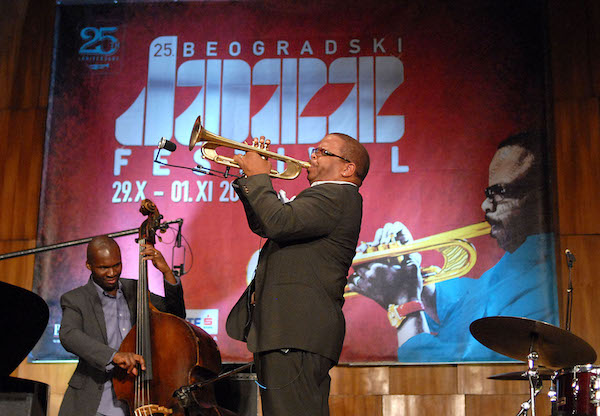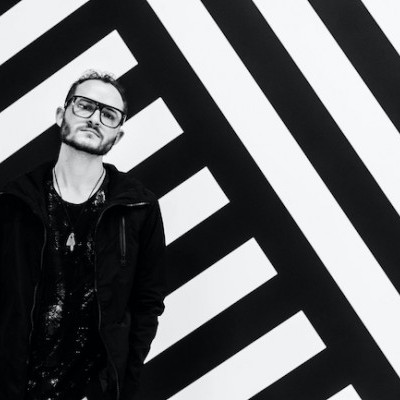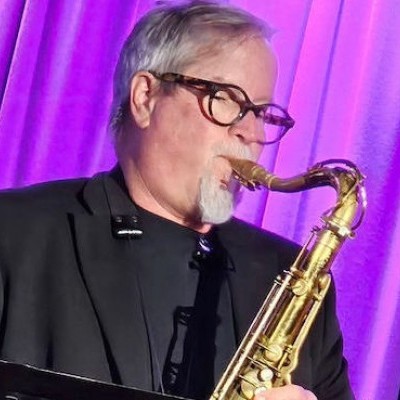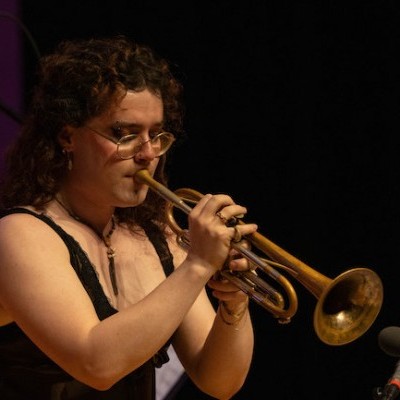Oct 28, 2025 10:47 AM
In Memoriam: Jack DeJohnette, 1942–2025
Jack DeJohnette, a bold and resourceful drummer and NEA Jazz Master who forged a unique vocabulary on the kit over his…

Terence Blanchard performs at the Belgrade Jazz Festival in 2009.
(Photo: Stanislav Milojkovic)Vojislav Pantić, the artistic director of the Belgrade Jazz Festival, can recount all sorts of stories about the jazz greats who have played the event, which will present its 35th edition this fall.
There was the time in 1971, the festival’s inaugural year, when trumpeter Miles Davis wouldn’t go on until he was sure that his pianist, a very late Keith Jarrett, had arrived at the concert hall, straight from the tarmac. Another time, in 1980, saxophonist Sonny Rollins continued playing on a dark stage without amplification well past the government curfew that mandated lights out at midnight. In 2009, saxophonist Joe Lovano insisted on playing with his arm in a cast, having suffered a fracture on tour the day before. And trumpeter Dizzy Gillespie, like Davis, first played the Belgrade festival in 1971—returning to perform four additional times, more often than any other artist—before political upheaval in Serbia shuttered the event for 15 years.
Pantić, who’s been with the festival in various capacities since 1988, took over as artistic director in 2005, at the end of the 15-year hiatus. In a nod to the festival’s anniversary and its improbable longevity, this year the event will run for six days instead of five, from Oct. 22 to 27, and will be billed as a “Jazz Celebration.”
“If there hadn’t been that break, we would be nearing our 50th anniversary—but we’re happy that it survived,” said Pantić from Belgrade during a phone interview. He noted that 85 percent of seats for this year’s spate of shows already had been sold.
The festival’s draw can be attributed to Pantić’s careful curation. As usual, this year’s lineup reflects the talent mix he prefers: roughly one-third U.S. musicians, one-third European musicians and one-third local Serbian musicians, many of whom studied abroad at notable U.S. and European schools.
“The names in the first concerts were so big, we have a responsibility to carry on that tradition,” he explained. “But we don’t want to just look to the past, at jazz 50 years ago. We want to look at jazz now.”
This year’s edition includes a glittering constellation of headliners at all levels of celebrity, representing sundry approaches to the language of jazz. All told, about 30 acts will share the festival’s three concert stages over the course of six days. Among the U.S. artists are vocalists Dianne Reeves and Jazzmeia Horn, bassist Stanley Clarke and saxophonist Charles Lloyd. The European contingent includes pianist Michael Wollny, guitarist Francesco Diodati’s band Yellow Squeeds, violinist Théo Ceccaldi, trumpeter Henry Spencer and saxophonist Maciej Obara. Serbian acts on the bill include the ensemble Nikolov-Ivanović Undectet, saxophonist Rastko Obradović and pianist Milan Stanisavljević.
Of all the visiting musicians, only one has played the festival before—saxophonist Lloyd, who returns for his third appearance. “I first performed in Belgrade in 2011 with [my ensemble] the New Quartet,” he wrote in an email from Taipei, Taiwan, where he was on tour. “We had a wild and wonderful concert in the festival theater, a rather depressing, concrete building. Many of the concert halls in the former Communist countries have this same feeling. We tried to blast through the cold, gray walls and bring in some light—we [heard] the cries for freedom that are embedded in the walls and [tried] to release them through sound.”
For Lloyd, whose heavy touring schedule has him jetting from one international capital to the next for much of the year, the Belgrade date stands out for its diverse, jazz-savvy audience and the skilled management of the BJF team. “[Pantić and Program Manager Dragan Ambrozic] run the festival extremely well, with an openness to new experiences and expansion of ideas,” he noted.
On Oct. 27, Lloyd and his newest ensemble, Kindred Spirits, are set to play Kombank Hall—formerly known as Dom Sindikata, a Soviet-era trade union building that underwent a modernizing facelift in 2017–’18. This time, Lloyd’s view from stage will be different: Kombank Hall is now a chic performance space that gleams with possibility and optimism.
Venues aside, though, some things about the Belgrade Jazz Festival remain unchanged. Pantić and his team continue in their seemingly indefatigable efforts to honor their city’s proud jazz traditions—and to fill its walls with great new voices. DB

Jack DeJohnette boasted a musical resume that was as long as it was fearsome.
Oct 28, 2025 10:47 AM
Jack DeJohnette, a bold and resourceful drummer and NEA Jazz Master who forged a unique vocabulary on the kit over his…

“I’ve told students, ‘I don’t mind if you use AI for this or that project,’” says MIT’s Pascal Le Boeuf. “‘But you need to tell me.’”
Sep 18, 2025 11:14 AM
A standard joke when it comes to discussing artificial intelligence, or AI, is that it’s developing so rapidly that…

Chuck Manning Works for NASA … and plays jazz.
Sep 18, 2025 11:23 AM
Congratulations! After years of study, you’ve earned your degree in jazz performance. But let’s face it: Making a…

Always a sharp dresser, Farnsworth wears a pocket square given to him by trumpeter Art Farmer. “You need to look good if you want to hang around me,” Farmer told him.
Sep 23, 2025 11:12 AM
When he was 12 years old, the hard-swinging veteran drummer Joe Farnsworth had a fateful encounter with his idol Max…

“Make time and energy to meet people and make friends,” suggests Millie Ahearn, a student at DePaul University.
Sep 18, 2025 11:32 AM
For many students, the transition into a collegiate jazz program can feel overwhelming — new peers, unfamiliar…